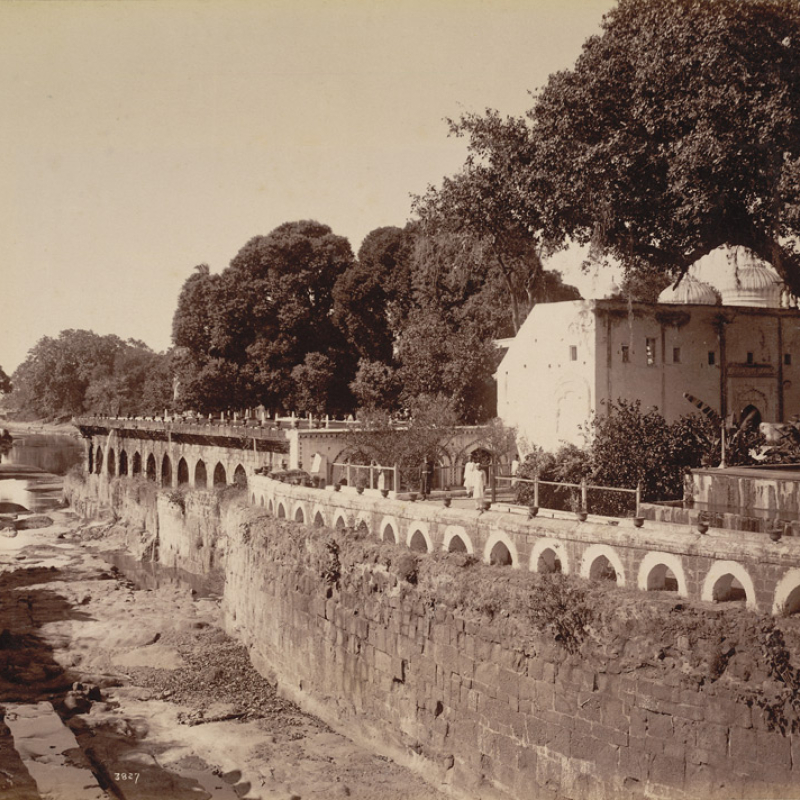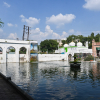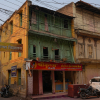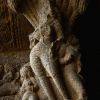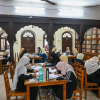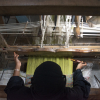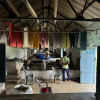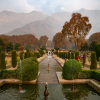History and Political Significance
The eponymous district in which the city of Chhatrapati Sambhajinagar is situated boasts a long and illustrious history. From the second century BCE, the Satavahanas, one of the Deccan’s first major dynasties, established their capital at Paithan (then called Pratishthan), located 50 kilometres to the south of Chhatrapati Sambhajinagar. In the thirteenth century, the Yadavas ruled from Devagiri, located 15 kilometres to the northwest of Chhatrapati Sambhajinagar. Devagiri, later renamed Daulatabad, briefly served as the capital of the Delhi Sultanate in the fourteenth century, before becoming a provincial capital under the Bahmani Sultanate and a second capital for the Nizam Shahs. Malik Ambar ruled from Daulatabad as the regent of the Nizam Shahs in the early seventeenth century, before founding a new city on the banks of the Kham River around 1605. He equipped the city with a robust water-supply system, without which the settlement would have been unviable. The region’s significance continued under Mughal rule, with Aurangzeb Alamgir spending significant periods of time in the city, first as a prince and provincial governor, and later as an emperor. Therefore, it served as an imperial city, though not officially a capital of the Mughals.
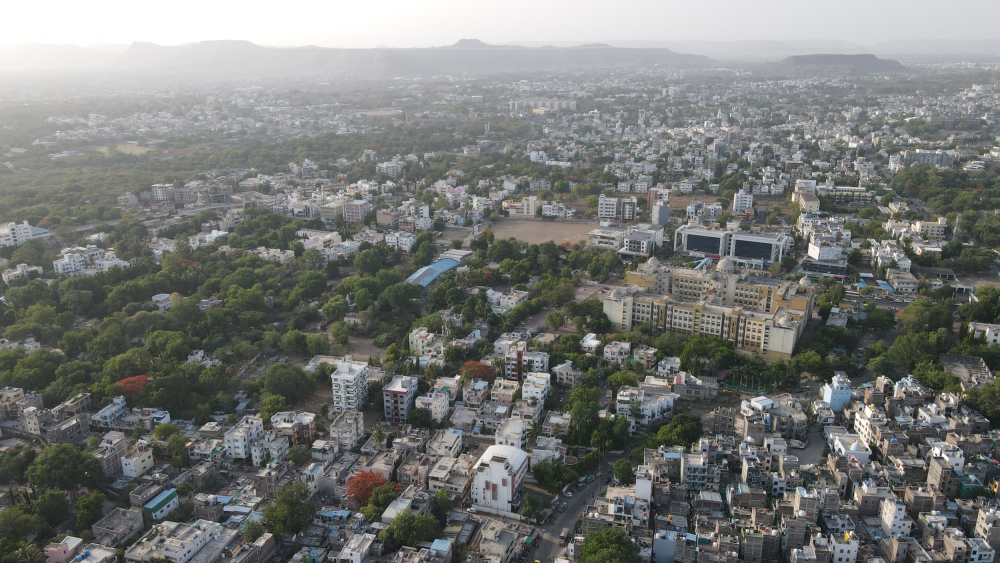
Aerial view of the city. (Picture Credits: Rushikesh Hoshing)
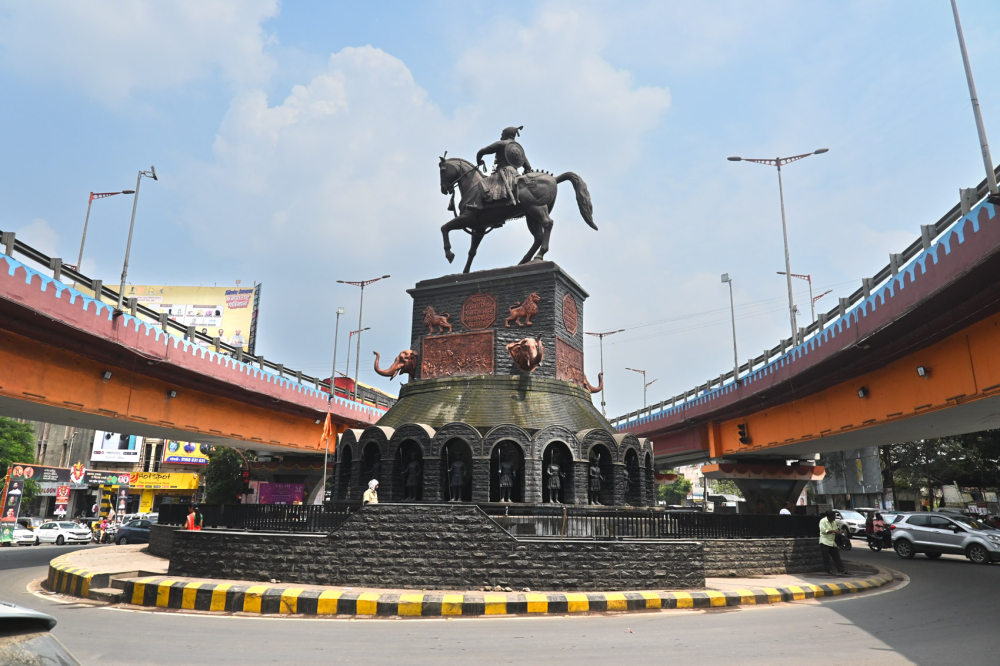
Shivaji Statue at Kranti Chowk. (Picture Credits: Anil Purohit)
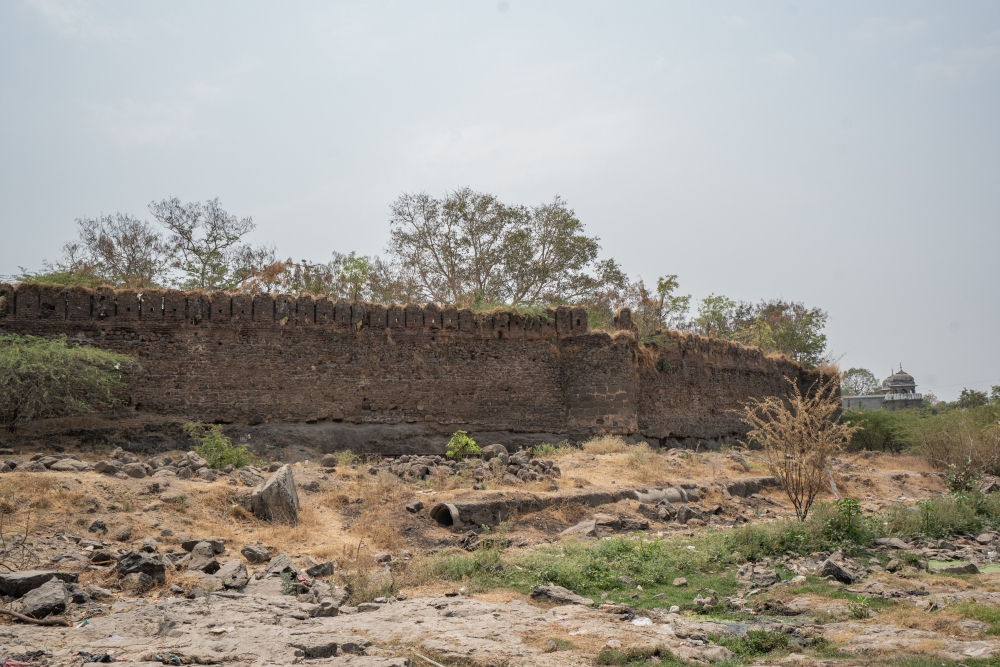
Extant parts of the city walls. (Picture Credits: Rushikesh Hoshing)
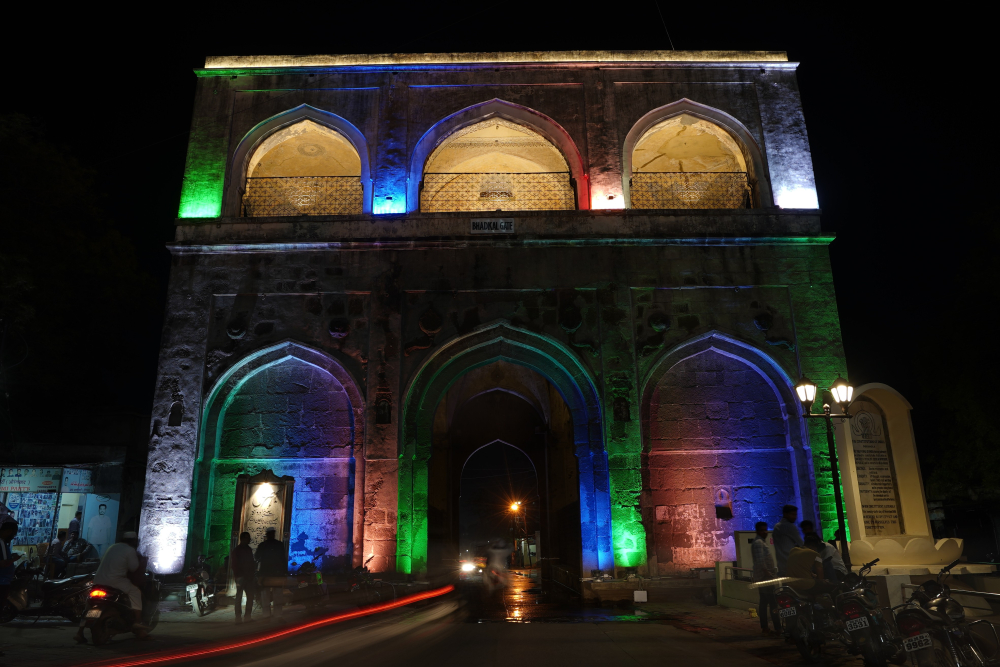
Bhadkal Darwaza at night. (Picture Credits: Rushikesh Hoshing)
After Aurangzeb’s death, the Asaf Jahs (better known as the Nizams of Hyderabad) declared independence from the Mughal empire in this city. From 1724 to 1743, it served as their capital before they relocated to Hyderabad. Chhatrapati Sambhajinagar remained an important regional city under the state of Hyderabad until 1948, when it became part of the Indian Union. Over the course of the twentieth century, the city evolved as an educational and industrial hub. The Aurangabad Mills, set up in 1897 by the then Nizam of Hyderabad, brought about the industrialisation of the city. Two key educational institutions were established in the city in the latter half of the twentieth century—Milind Mahavidyalaya in 1950, established on 54 acres gifted by Mir Osman Ali Khan, the ruler of Hyderabad, to Dr Babasaheb Ambedkar (now existing as three separate colleges); and Marathwada University in 1958, renamed Dr Babasaheb Ambedkar Marathwada University in 1994. These institutions boosted the region’s educational landscape that previously lacked higher learning facilities.
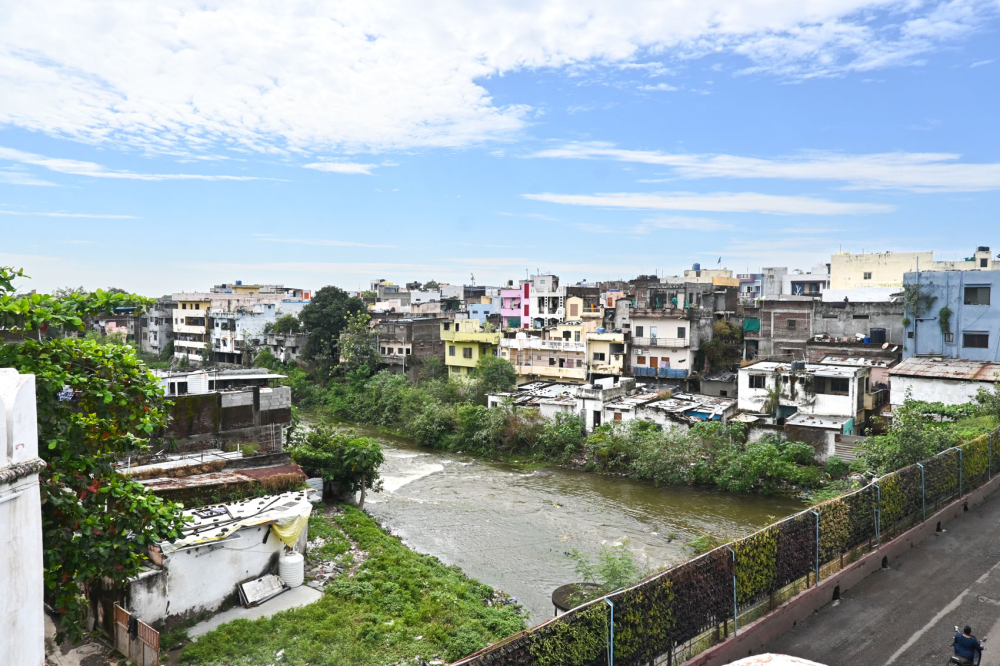
Kham river. (Picture Credits: Anil Purohit)

Aurangzeb, ca. 1890. (Picture Courtesy: Victoria and Albert Museum)
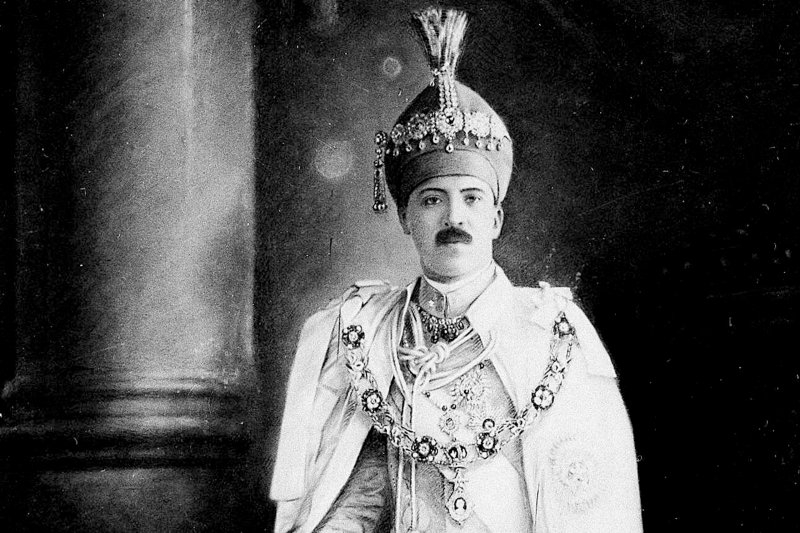
The last Nizam of Hyderbad, Osman Ali Khan. (Picture Source: Wikimedia Commons)
Today, Chhatrapati Sambhajinagar is the fifth-largest urban settlement in the state of Maharashtra, known for its educational institutions, industries and a thriving tourist economy. But few people know of the cultural and literary importance of the city, particularly under the Asaf Jahs. The city dates back two millennia, as evidenced by the Aurangabad caves dating to the reign of the Satavahanas, affirming its importance on a major ancient trade route. Several places within the district, such as Bhokardhan (ancient Bhogyavardhana), have yielded archaeological data, including terracotta. While the modern city itself was founded early in the seventeenth century, it saw a century of growth, followed by a period of economic decline and a resurgence from the twentieth century onwards. Serving as the de facto or de jure capital of at least three monarchies, the city remains important in public imagination even today.
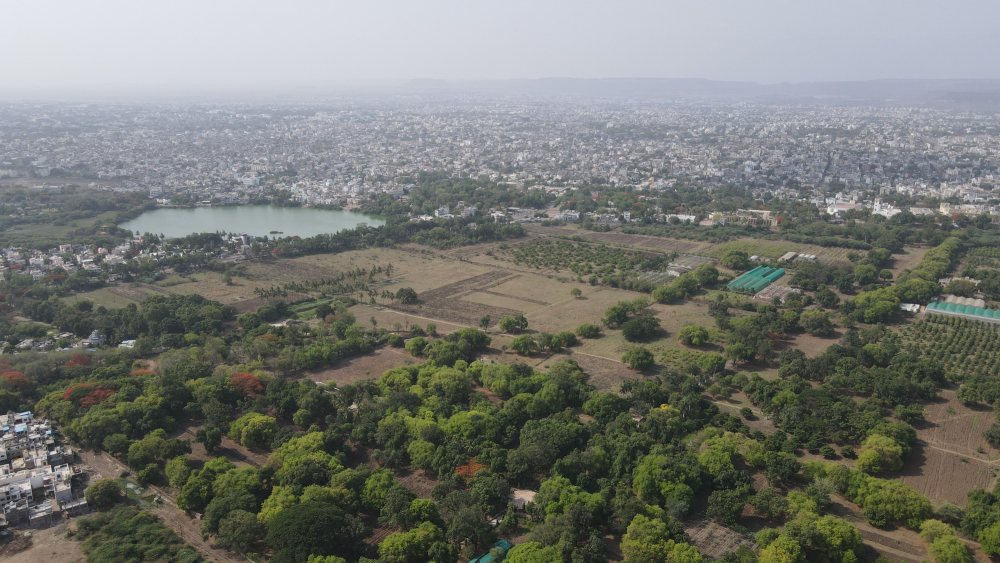
Himayat Bagh. (Picture Credits: Rushikesh Hoshing)
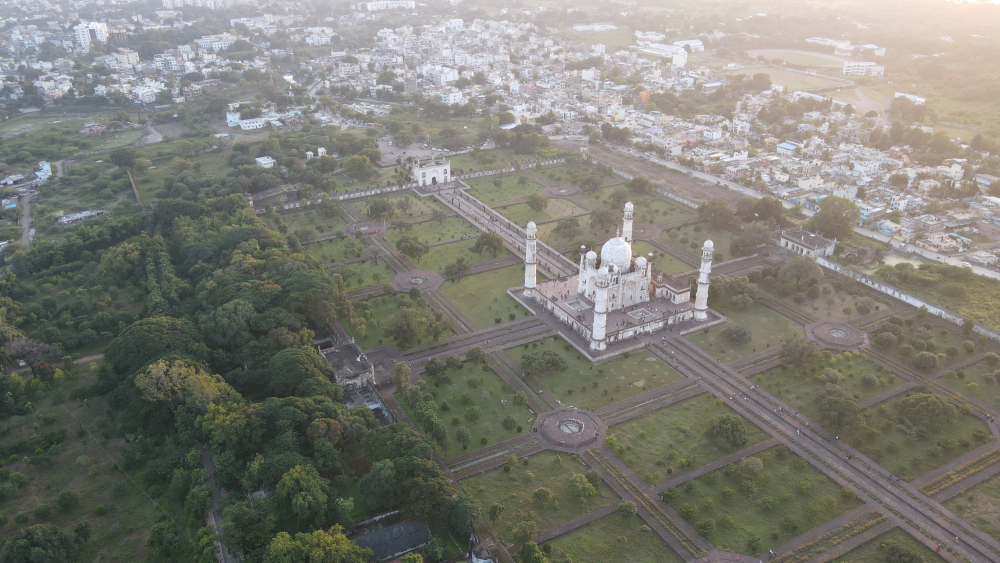
Aerial view of Bibi Ka Maqbara and surrounding area. (Picture Credits: Rushikesh Hoshing)
Changes in political regimes and names are a part of the storied history of Chhatrapati Sambhajinagar. Originally founded as a city called Khadki by Malik Ambar in 1610, its name was changed on at least four occasions. In a short-lived attempt, Malik Ambar’s son Fateh Khan also called it Fatehnagar. Initially referred to as Khujistah Buniyad by the Mughals, it was renamed Aurangabad after Emperor Aurangzeb Alamgir, a name that continued to thrive until recently. In 2023, the Republic of India renamed the city Chhatrapati Sambhajinagar.
Cultural and Religious Heritage
Situated in the Godavari basin, Chhatrapati Sambhajinagar is a repository of the region’s historical and cultural heritage. The nascent city under Malik Ambar was endowed with several monumental buildings and institutions, including the Jami Masjid. Under the Mughals, the Naukhanda Palace precinct of Malik Ambar, with Bhadkal Darwaza nearby, became part of the walled city, and several new suburbs, such as Begumpura, were set up. Noblemen such as Pahad Singh built themselves palaces in large walled gardens (today the State Archaeology Museum). Interestingly, despite the presence of a British cantonment on the western side of the city, which was established in 1816, it largely maintained its indigenous character, with minimal vestiges of colonial culture remaining in the present day.
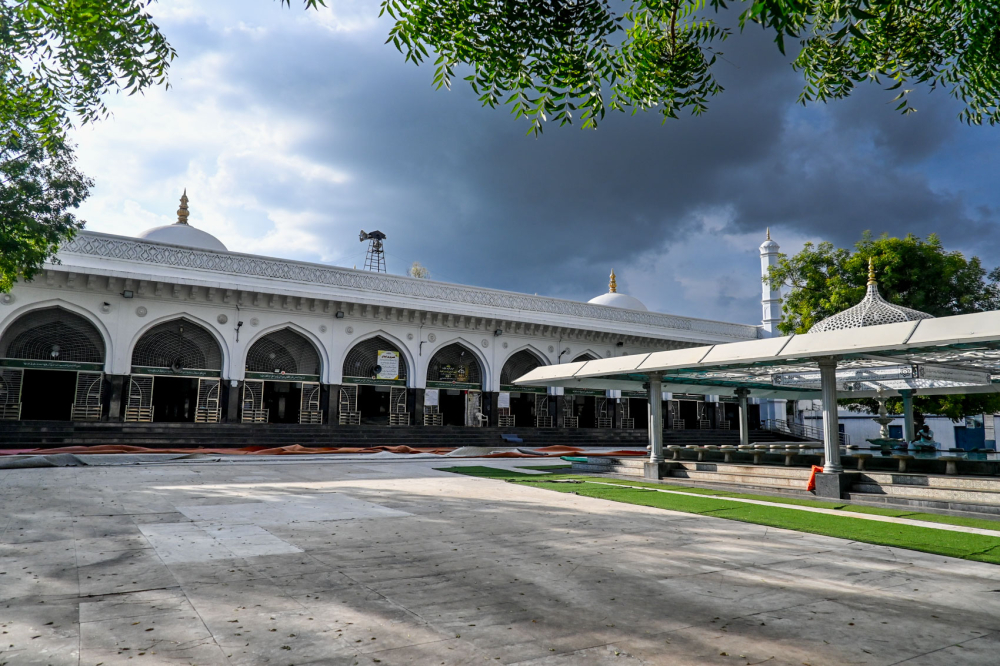
Jami Masjid. (Picture Credits: Anil Purohit)
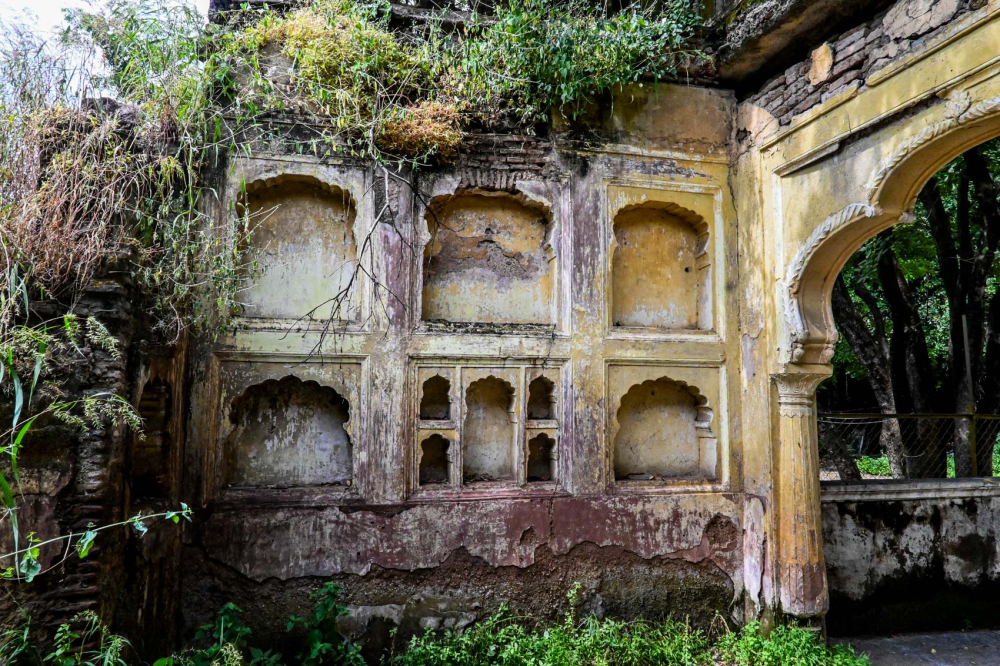
A wing of the Naukhanda Palace in disrepair. (Picture Credits: Anil Purohit)
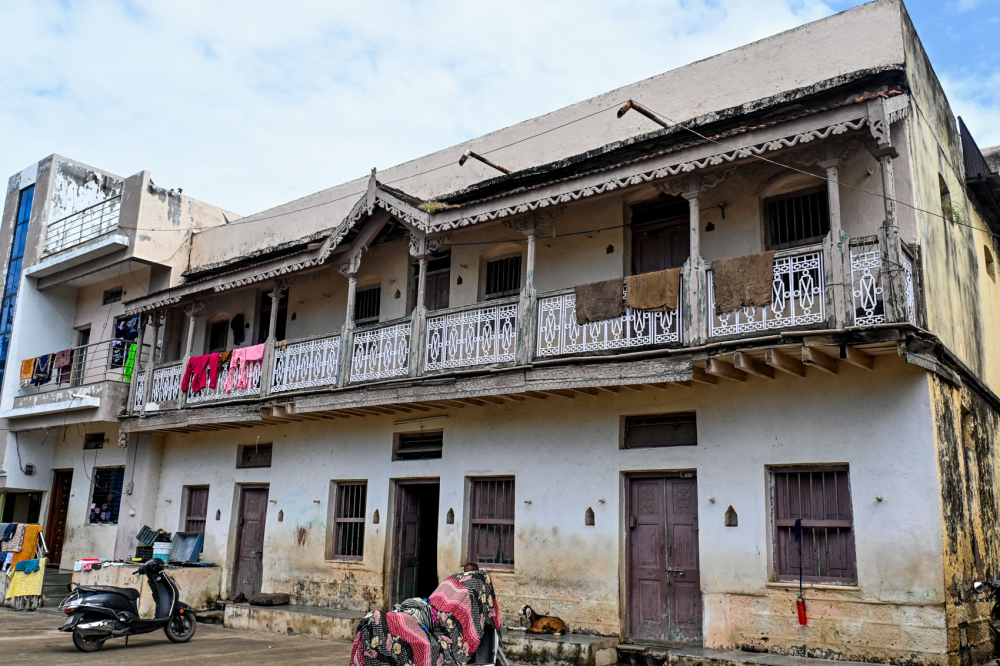
Single-storey house on Cantonment Road. (Picture Credits: Anil Purohit)
As the city flourished over time, it became a haven for artists, nobility and men of letters. A new royal campus was set up just north of the city, overlooking the Himayat Bagh orchards, befitting its status as the capital of the Mughal province of Ahmadnagar. This era saw the birth of influential poets such as Wali Dakkhani Aurangabadi, whose fabled visit to Delhi in 1700 laid the groundwork for literary Urdu, as he presented poetry in a precursor of that language. Aurangabad was to remain important for Urdu poetry through the twentieth century, producing notable poets such as Sikandar Ali Wajh, Qazi Salim, Javed Nasir and Bashar Nawaz. The linguist and scholar Maulana Abdul Haq, known as Baba-i Urdu, also lived in this region from 1912, when he was appointed as chief inspector in the Department of Education, and later the principal of Osmania College. Till 1936, his residence was the office of the Anjuman-i Taraqqi-i Urdu, of which he was the secretary. The Urdu Dictionary of Technical Terms was also compiled here. The city has also produced a number of important literary personalities, such as N.D. Mahanor (who wrote in Marathi) and Malti Joshi (who wrote in both Hindi and Marathi). Notable classical musicians include Nath Neralkar, who spent his entire life here. In 2017, the Maharashtra National Law University was established in the city.

Panchakki by Raja Deen Dayal. (Picture Source: Wikimedia Commons)
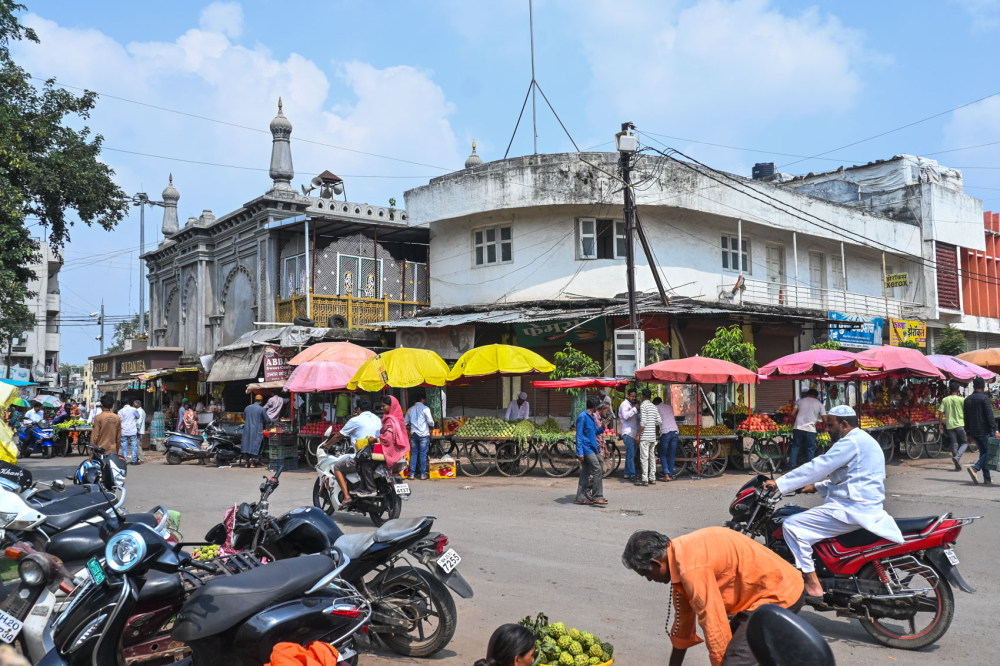
Shah Ganj Mandi. (Picture Credits: Anil Purohit)
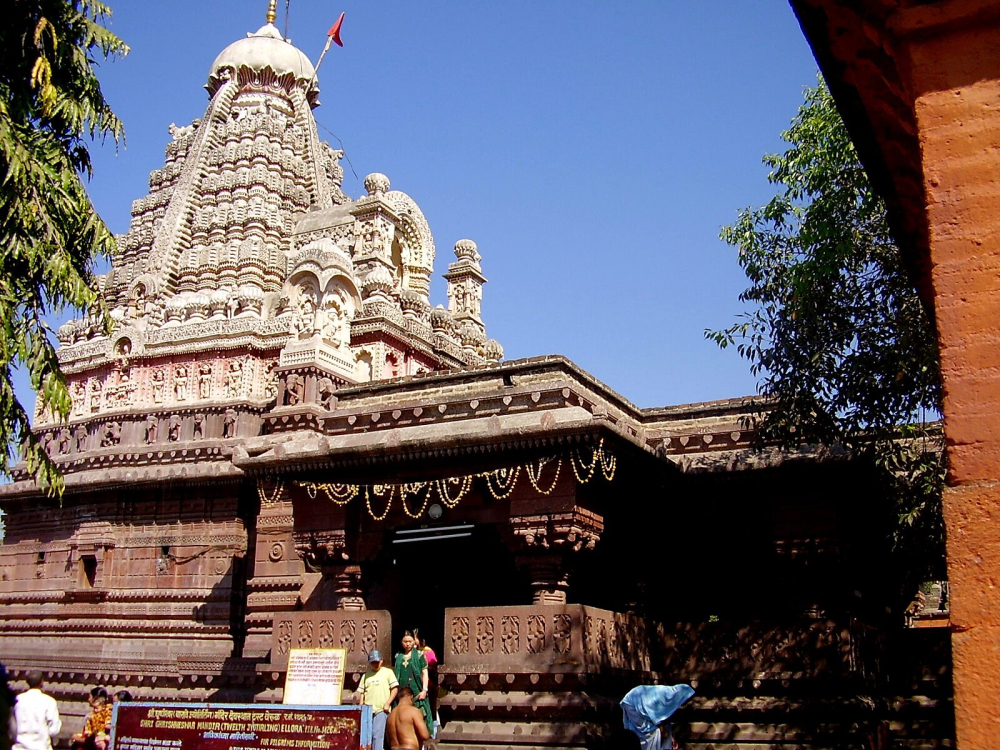
The Ghrishneshwar temple. (Picture Source: Wikimedia Commons)
Chhatrapati Sambhajinagar has long been associated with various holy men and sacred sites, contributing to its spiritual significance. One of the earliest holy men in this region was Chakradhar Swami, who founded the Mahanubhava sect, which predates the founding of the city. While the nearby Khuldabad (earlier known as Rauza) has been an important settlement for Sufi saints and their disciples, Chhatrapati Sambhajinagar also has several important shrines. The city is dotted with dargahs dedicated to Sufi saints of various orders, but dominantly the Chishti lineage, with notable examples being the tombs of Nizam ud-din Auliya Aurangabadi and Syed Shah Nur. A unique religious complex popularly known as Panchakki, stands out as a microcosm of the city’s cultural syncretism. This khanqah (resting house for saints, travellers and pilgrims) of Baba Palangposh and his disciple Baba Musafir, who arrived from Bukhara in Central Asia, exemplifies the cosmopolitan connections of the seventeenth century. The complex houses a mosque, madrasa, residential quarters, offices and graves of the holy men and their disciples. At the entrance is a large tank of water, which is fed through the remarkable underground water-supply system that was built by Malik Ambar. The large water-operated gristmill within the complex provides its popular nomenclature. The complex is situated on the banks of the Kham River, just outside Mahmud Darwaza, one of the many gateways of the walled city. The city walls were constructed in 1682 under the Emperor Aurangzeb, and while the walls do not survive in their entirety today, it has gone on to earn the city the moniker ‘City of Gates’. The region is associated with many Hindu traditions as well, with several Marathi saint-poets belonging to the city and pilgrimage sites, such as Paithan and the Ghrishneshwar temple at Verul, located in its vicinity. The Vaishnava saint Eknath was in the employment of the Nizam Shahs at Daulatabad, as was his guru Janardan Swami. The temple of Khandoba in the Satara ward in the southern part of the city is architecturally notable among eighteenth-century temples.
Urban and Industrial Growth
In continuity with the Mughals, through the rule of the Asaf Jahs in the eighteenth and nineteenth centuries, the city maintained its status as the administrative centre of Marathwada, though economically, it was in decline. From the late nineteenth century onwards, the Nizam of Hyderabad pushed for industrialisation, given its geographical location in the country’s cotton belt. Cotton and silk mills were set up, boosting the production of the local textile called himroo, a blend of cotton and silk. However, the region’s rapid industrial development began when it was absorbed into the Maharashtra state of the Indian Republic. Government agencies like the Maharashtra Industrial Development Corporation and the City Industrial and Development Corporation set up industrial parks at Chikalthana, Shendra and Waluj. Consequently, today Chhatrapati Sambhajinagar is a significant industrial hub, hosting several multinational companies, including major sectors such as automobile manufacturing, agriculture, biotech, breweries and pharmaceuticals, among others. In 2019, the establishment of a new integrated industrial city covering an area of 10,000 acres, called Aurangabad Industrial City, was proposed.
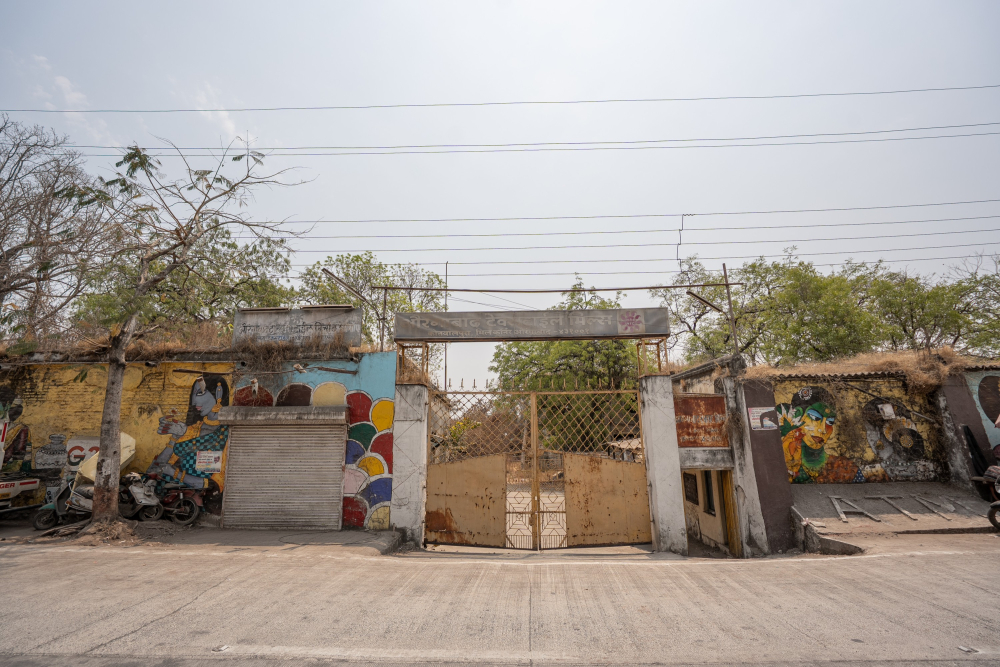
Aurangabad Mills. (Picture Credits: Rushikesh Hoshing)
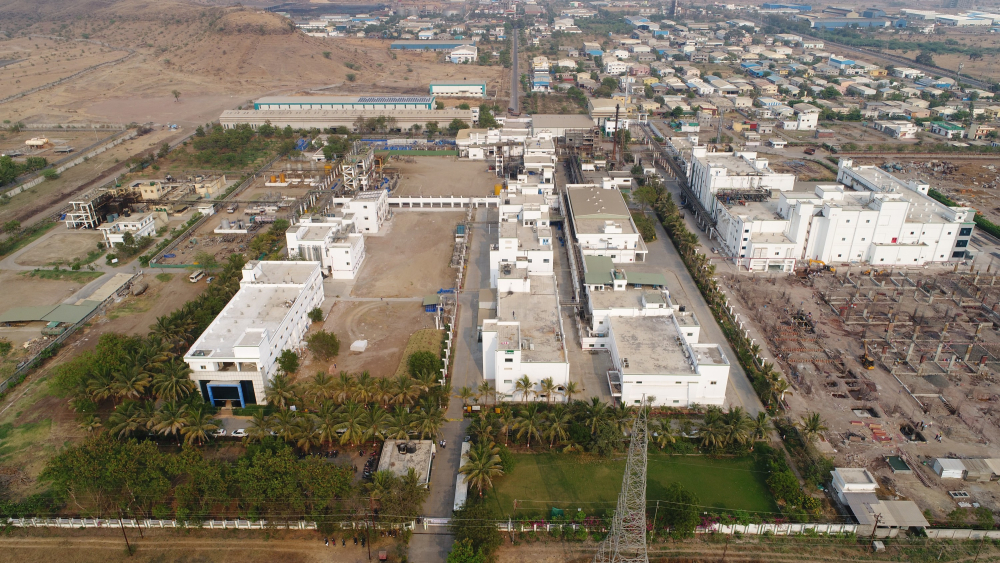
Industrial area in the city. (Picture Credits: Rushikesh Hoshing)
Throughout its storied history spanning four centuries, Chhatrapati Sambhajinagar has witnessed numerous cultural, social and name transformations. In the twenty-first century, it continues to flourish in its new incarnation as a significant urban agglomeration, having adapted and integrated several phases of the past to chart a course for its future.
This essay has been created as part of Sahapedia's My City My Heritage project, supported by the InterGlobe Foundation (IGF).
